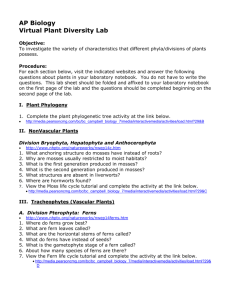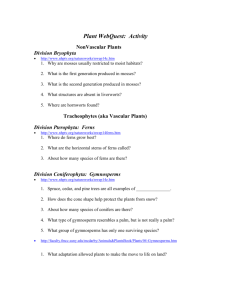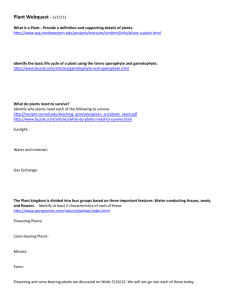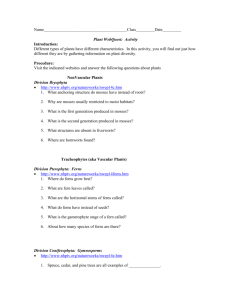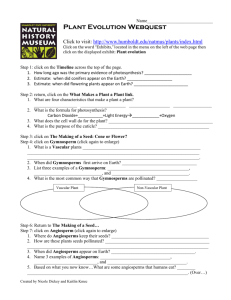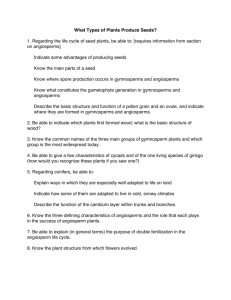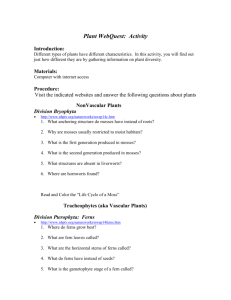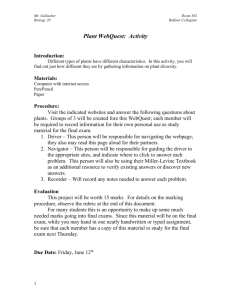Plant WebQuest: Background Information
advertisement
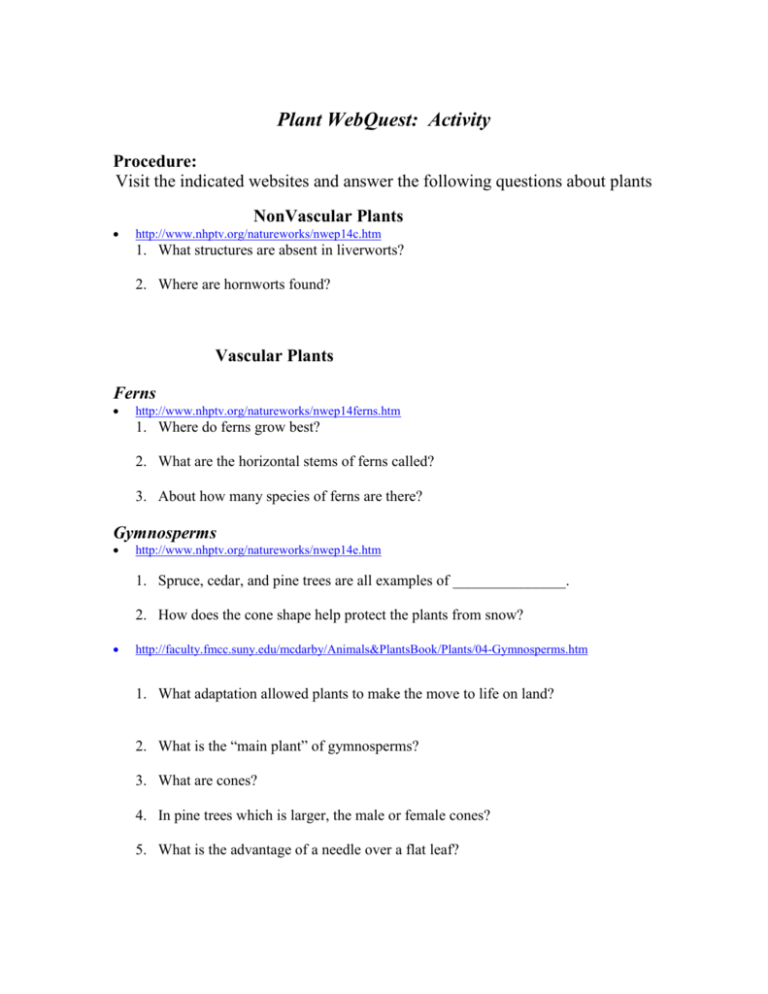
Plant WebQuest: Activity Procedure: Visit the indicated websites and answer the following questions about plants NonVascular Plants http://www.nhptv.org/natureworks/nwep14c.htm 1. What structures are absent in liverworts? 2. Where are hornworts found? Vascular Plants Ferns http://www.nhptv.org/natureworks/nwep14ferns.htm 1. Where do ferns grow best? 2. What are the horizontal stems of ferns called? 3. About how many species of ferns are there? Gymnosperms http://www.nhptv.org/natureworks/nwep14e.htm 1. Spruce, cedar, and pine trees are all examples of _______________. 2. How does the cone shape help protect the plants from snow? http://faculty.fmcc.suny.edu/mcdarby/Animals&PlantsBook/Plants/04-Gymnosperms.htm 1. What adaptation allowed plants to make the move to life on land? 2. What is the “main plant” of gymnosperms? 3. What are cones? 4. In pine trees which is larger, the male or female cones? 5. What is the advantage of a needle over a flat leaf? Angiosperms http://www.nhptv.org/natureworks/nwep14f.htm 1. Where are angiosperm seeds found? 2. What process must angiosperms go through before they can reproduce? 3. How many seed leaves do monocots start with? 4. How many seed leaves do dicots start with? http://faculty.fmcc.suny.edu/mcdarby/Animals&PlantsBook/Plants/05-Angiosperms.htm 1. Even though most plants are angiosperms, gymnosperms still have an advantage in certain environments. In what type of environments are gymnosperms more successful than angiosperms? What is the function of the fruit in an angiosperm? 2. Seeds are designed to travel in different ways. List two types of fruits that are designed to fly through the air. List one type of fruit that is designed to float across water. List one type of fruit that is designed to attach to passersby. 3. Angiosperms are vascular plants with xylem and phloem. In which direction does xylem flow? In which direction does phloem flow? 4. What structure is the site of photosynthesis in angiosperms? 5. How can a plant control the amount of carbon dioxide it takes in and the amount of water it loses?


